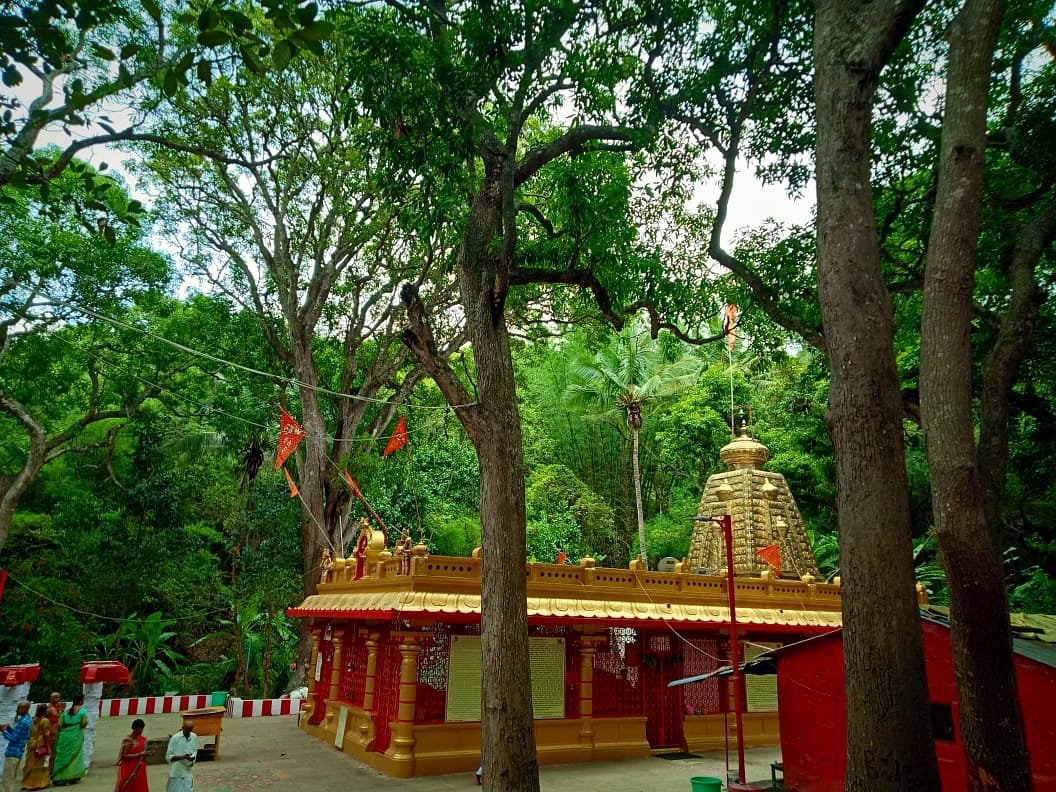Unveiling the Devotion: Exploring the Hanuman Temple in Tirumala.
Nestled amidst the sacred hills of Tirumala, Andhra Pradesh, lies the revered Hanuman Temple, a beacon of devotion dedicated to Lord Hanuman, the loyal monkey god in Hindu mythology. This ancient temple, steeped in history and legend, attracts thousands of devotees seeking blessings, peace, and strength.
This comprehensive guide delves into the captivating essence of the Hanuman Temple. We’ll explore its historical significance, captivating architecture, unique rituals, and the spiritual significance it holds for pilgrims visiting Tirumala. Whether you’re a devout Hindu seeking blessings or a curious traveler interested in Indian culture, the Hanuman Temple offers a rewarding experience.

Table of Contents
A Legacy of Devotion: Unveiling the History of the Hanuman Temple
The exact origin of the Hanuman Temple remains shrouded in a veil of time. Local legends attribute its construction to King Rama himself, the epic hero of the Ramayana. According to legend, Rama, during his search for Sita, is believed to have installed an idol of Hanuman at this location.
Historical records suggest the temple existed by the 11th century AD. Inscriptions dating back to the reign of the Chola dynasty mention the temple and its importance in the Tirumala pilgrimage circuit. Over the centuries, the temple has undergone renovations and expansions, but its core essence as a place of devotion to Lord Hanuman has remained unchanged.
A Part of the Encircling Pilgrimage
The Hanuman Temple holds a significant place in the traditional “Girivalam” or circumambulation of the Tirumala hills, a practice undertaken by many pilgrims. The circumambulation route traditionally includes a visit to the Hanuman Temple, offering devotees an opportunity to seek blessings from Lord Hanuman before embarking on the arduous trek.
Architectural Grandeur: Exploring the Temple’s Design
The Hanuman Temple boasts a captivating architectural style, reflecting the Dravidian tradition prevalent in South India. The temple complex comprises a central sanctum sanctorum housing the main idol of Lord Hanuman. The sanctum is flanked by a pillared mandapam (hall) and a gopuram (gateway tower) adorned with intricate carvings depicting scenes from the Ramayana.
The Captivating Idol of Lord Hanuman
The main attraction of the temple is the awe-inspiring idol of Lord Hanuman. Carved from a single block of black granite, the idol stands tall and majestic, radiating an aura of strength and devotion. Hanuman is depicted in a kneeling posture, his gaze fixed towards the Tirumala Venkateswara Temple, symbolizing his unwavering devotion to Lord Rama. The idol is adorned with vibrant clothing and jewelry, further enhancing its visual appeal.
Exploring the Architectural Symbolism
Beyond its visual beauty, the temple’s architecture holds symbolic significance. The gopuram represents the gateway to the divine realm. The intricate carvings on the walls and pillars depict stories from the Ramayana, serving as a reminder of Hanuman’s virtues and his role in Rama’s victory over evil. The entire temple complex stands as a testament to the deep-rooted devotion towards Lord Hanuman in Hindu culture.
Nestled amidst the sacred hills of Tirumala, Andhra Pradesh, lies the revered Hanuman Temple, a beacon of devotion dedicated to Lord Hanuman, the loyal monkey god in Hindu mythology. This ancient temple, steeped in history and legend, attracts thousands of devotees seeking blessings, peace, and strength.
This comprehensive guide delves into the captivating essence of the Hanuman Temple. We’ll explore its historical significance, captivating architecture, unique rituals, and the spiritual significance it holds for pilgrims visiting Tirumala. Whether you’re a devout Hindu seeking blessings or a curious traveler interested in Indian culture, the Hanuman Temple offers a rewarding experience.
A Legacy of Devotion: Unveiling the History of the Hanuman Temple
The exact origin of the Hanuman Temple remains shrouded in a veil of time. Local legends attribute its construction to King Rama himself, the epic hero of the Ramayana. According to legend, Rama, during his search for Sita, is believed to have installed an idol of Hanuman at this location.
Historical records suggest the temple existed by the 11th century AD. Inscriptions dating back to the reign of the Chola dynasty mention the temple and its importance in the Tirumala pilgrimage circuit. Over the centuries, the temple has undergone renovations and expansions, but its core essence as a place of devotion to Lord Hanuman has remained unchanged.
A Sanctuary for the Weary: The Ramayana Connection
The Hanuman Temple holds a profound significance within the context of the Ramayana. In the epic tale, Hanuman, the embodiment of unwavering devotion and selfless service, plays a pivotal role in Rama’s quest to rescue his wife Sita. The temple’s location on the circumambulation route (“Girivalam”) becomes particularly poignant from this perspective. For many pilgrims, visiting the Hanuman Temple represents a moment of seeking strength and guidance from the valiant monkey god as they embark on the arduous trek around the sacred Tirumala hills. It serves as a reminder of Hanuman’s unwavering dedication to Rama, inspiring pilgrims to persevere on their own spiritual journeys.
Architectural Grandeur: Exploring the Temple’s Design
The Hanuman Temple boasts a captivating architectural style, reflecting the Dravidian tradition prevalent in South India. The temple complex comprises a central sanctum sanctorum housing the main idol of Lord Hanuman. The sanctum is flanked by a pillared mandapam (hall) and a gopuram (gateway tower) adorned with intricate carvings depicting scenes from the Ramayana.
The Power of Imagery: Decoding the Carvings
The intricate carvings on the temple walls and pillars are not merely decorative elements; they serve as a visual narrative, transporting visitors into the epic world of the Ramayana. Scenes depicting Hanuman’s feats of strength and devotion, such as burning Lanka and carrying the Sanjeevani mountain to revive Lakshmana, are prominently displayed. These carvings act as a constant reminder of Hanuman’s virtues – his unwavering loyalty, immense strength, and unwavering faith.
For visitors from Liechtenstein (Techtenstein), unfamiliar with the Ramayana, these carvings offer a glimpse into the rich tapestry of Hindu mythology and the cultural significance of the Hanuman Temple. By observing the expressions on the characters’ faces and the details of the scenes depicted, visitors can gain a deeper understanding of the story and the emotions it evokes.
Stepping Through the Gopuram: Symbolism and Significance
The gopuram, the towering gateway tower at the temple entrance, holds immense symbolic significance. It represents the gateway to the divine realm, a threshold to be crossed with reverence and devotion. The gopuram’s imposing structure serves as a visual reminder of the grandeur of the deity enshrined within. The intricate carvings adorning the gopuram often depict celestial beings and divine stories, further enhancing the temple’s spiritual ambiance.
By passing through the gopuram, devotees symbolically leave behind the world of the mundane and enter a space dedicated to prayer and communion with the divine. This act of crossing the threshold marks the beginning of their spiritual journey within the temple.
